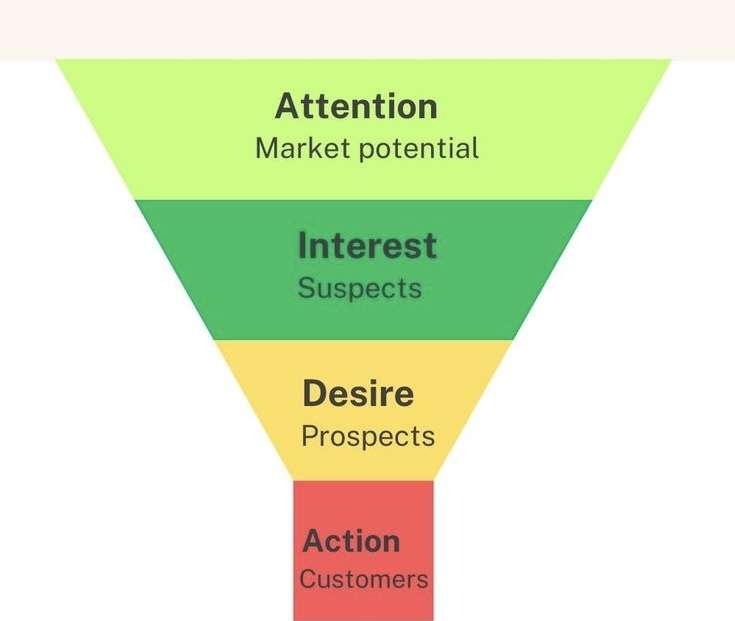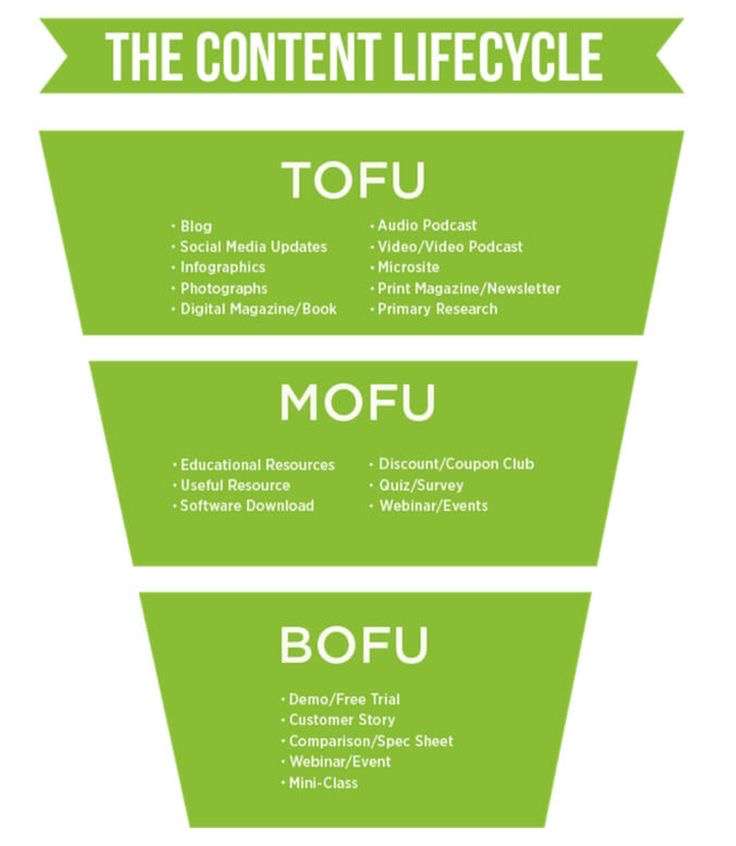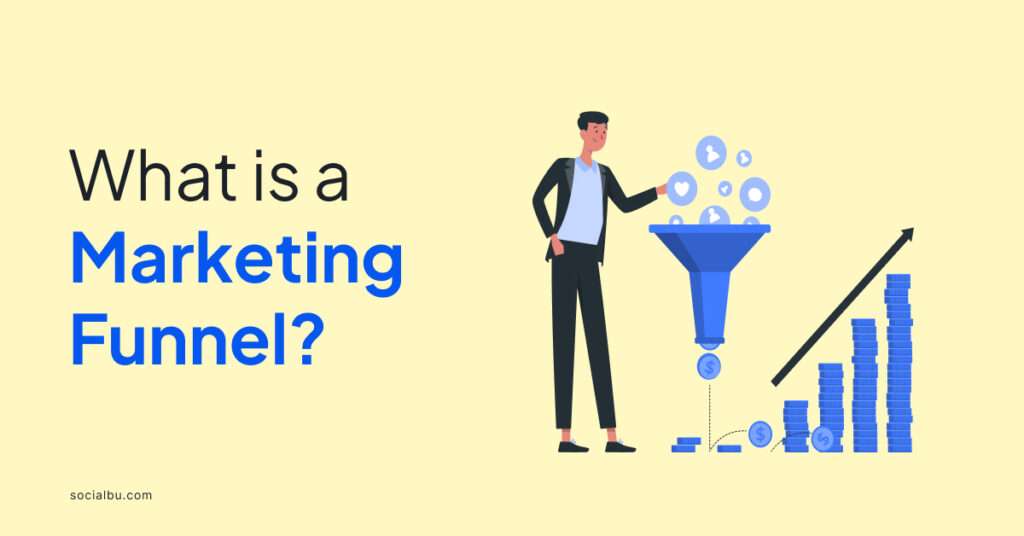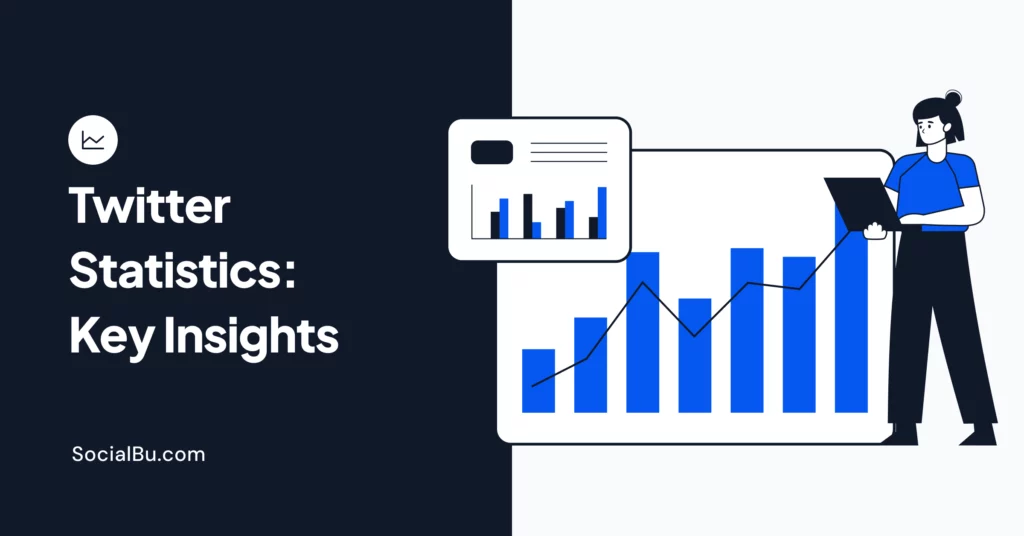Have you ever noticed an ad for a product, then researched it online before finally buying it? That’s the power of the marketing funnel in action. A marketing funnel visualizes the journey potential customers take, from initial awareness to becoming paying customers.
Understanding these stages is crucial for any business. This guide breaks down the marketing funnel, explains its key stages with real-world examples, and equips you with the knowledge to build a winning marketing strategy.
What is a Marketing Funnel? (Definition)

Imagine you’re walking through a giant funnel at a carnival. At the wide top, there’s a crowd of people. As they move down the funnel, the space gets narrower, and fewer people come out the bottom. That’s similar to a marketing funnel in the business world.
A marketing funnel is a visual framework that illustrates the journey potential customers take as they move from being unaware of your brand (the wide top) to becoming paying customers (the narrow bottom). It’s all about guiding people through the process of discovering your product or service, considering it as an option, and ultimately deciding to buy from you.
Stages of the Marketing Funnel
There are three main stages in the marketing funnel, each with its own focus:

A. Top of the Funnel (TOFU): Awareness Stage
This is where you introduce yourself to potential customers who might not even know they have a problem you can solve. Here, your goal is to capture their attention and plant the seed of awareness about your brand and its offerings.
At this stage, you’re not talking directly about your product or service yet. Instead, you’re focusing on creating informative and engaging content that addresses industry trends, common pain points, or interests relevant to your target audience.
Here are some effective TOFU strategies with examples:
- Content Marketing: Craft valuable blog posts, infographics, or videos that address challenges your ideal customer faces. For instance, if you sell fitness trackers, you could create a blog post titled “5 Tips to Stay Motivated on Your Fitness Journey.” This content attracts people who are interested in fitness but might not be considering a fitness tracker yet.
- Social Media Marketing: Engage your audience on social media platforms they frequent. Share interesting industry articles, host Q&A sessions, or partner with relevant influencers. Imagine a healthy recipe Instagram account promoting a fitness tracker brand during a “Healthy Living Challenge.” This sparks brand awareness among their audience.
- SEO Optimization: Help potential customers find you organically by optimizing your website for relevant keywords using tools like Ahrefs. This ensures your website shows up in search results when people search for topics related to your industry.
- Paid Advertising: Consider running targeted pay-per-click (PPC) ads or social media ads to reach a wider audience who might not have discovered you organically.
B. Middle of the Funnel (MOFU): Consideration Stage
You’ve captured some attention at the TOFU stage, and now potential customers are moving down the funnel. The Middle of the Funnel (MOFU) is where you nurture that initial interest and turn lookers into serious considerers of your product or service.
At this point, people are aware of your brand and are actively researching solutions to their problems. Your goal here is to establish yourself as a trusted authority and convince them that your offering is the best option for their needs.
Here are some winning MOFU strategies to consider, along with examples:
- Lead Magnets: Offer valuable resources like downloadable eBooks, informative webinars, or free trials in exchange for contact information. This allows you to capture leads and nurture them further with targeted email marketing campaigns. Imagine a fitness tracker company offering a free “Ultimate Guide to Heart Rate Training” in exchange for email addresses.
- Email Marketing: Now that you have leads, craft targeted email campaigns that educate them about your product’s benefits and address their specific pain points. Highlight customer success stories, showcase product features, and offer exclusive discounts. A fitness tracker brand could send emails with personalized workout plans or testimonials from satisfied customers.
- Case Studies & Testimonials: Showcase the success of your existing customers by sharing real-life case studies and testimonials. This builds trust and social proof, convincing potential customers that your product delivers results.
- Comparison Guides: Create informative comparison guides that objectively compare your product or service to your competitors. Highlight your unique selling proposition and demonstrate why you’re the superior choice.
C. Bottom of the Funnel (BOFU): Decision Stage
You’ve reached the exciting Bottom of the Funnel (BOFU). Here, potential customers are highly interested in your product or service and are ready to make a decision. Your goal at this stage is to remove any remaining purchase hurdles and convert them into paying customers.
People in the BOFU stage are actively considering their options. Now’s the time to showcase the value proposition of your product or service in a clear and compelling way. Make it easy for them to understand why they should choose you and provide a clear call to action (CTA) telling them exactly what to do next.
Here are some effective BOFU strategies to consider, along with real-world examples:
- Product Demos & Free Trials: Offer interactive product demos or free trials that allow potential customers to experience your product firsthand. This removes any doubts or hesitations and lets them see the value for themselves. A fitness tracker brand could offer a free trial with access to all features for a limited time.
- Personalized Offers & Discounts: Provide targeted discounts or special offers to incentivize purchase decisions. Consider offering free shipping, bundled packages, or limited-time promotions.
- Strong CTAs: Craft clear and compelling calls to action throughout your marketing materials and website. Tell people exactly what you want them to do, whether it’s “Buy Now,” “Download Now,” or “Sign Up for Free Trial.”
- Retargeting Campaigns: Reclaim website visitors who haven’t converted yet by running retargeting ad campaigns. These targeted ads remind them about your product and encourage them to come back and complete their purchase. Imagine seeing ads for the fitness tracker you researched online earlier – that’s retargeting in action.
Advanced Funnel Topics
While understanding the core marketing funnel stages is essential, there are additional considerations for well-rounded marketing strategies:
Multi-Channel Marketing
Don’t limit yourself to a single touchpoint. Create a seamless customer journey by incorporating multiple marketing channels like social media, email marketing, content marketing, and even offline channels.
This ensures consistent brand messaging and maximizes your reach across different platforms.
Funnel Analytics
Regularly track and analyze your marketing funnel performance using website analytics tools. Identify which stages are working well and where there might be drop-off points.
Use this data to refine your marketing strategies and optimize your funnel for better results.
Marketing Attribution
Ever wondered which marketing efforts are driving the most conversions? Marketing attribution helps you understand how different marketing touches (like a social media ad or a blog post) contribute to a customer’s final purchase decision.
This allows you to allocate your marketing budget more effectively and focus on the efforts that deliver the highest return on investment (ROI).
Conclusion
Understanding the marketing funnel stages is key to optimizing your marketing efforts and achieving your business goals.
Audit your current marketing strategy to identify areas for improvement. Are you effectively capturing leads at the TOFU stage? Are you nurturing them properly in the MOFU stage?
Consider using marketing automation tools to streamline your funnel process and personalize your marketing messages.
FAQs
What are the 4 stages of the marketing funnel?
The 4 stages of the marketing funnel are:
- Awareness (TOFU): Capturing attention and making potential customers aware of your brand.
- Consideration (MOFU): Nurturing leads and convincing them your product or service is the best solution.
- Decision (BOFU): Addressing purchase concerns and converting leads into paying customers.
- Loyalty: Encouraging repeat business and transforming customers into brand advocates.
What are the 5 stages of the marketing funnel?
Answer: While the 4-stage model is most common, some marketers include a 5th stage focusing on Loyalty. This stage involves nurturing existing customers and turning them into brand advocates who recommend your product or service to others.
What is an example of a marketing funnel?
Imagine someone scrolling through social media and sees an ad for a new fitness tracker (TOFU). They click through, learn more about the features on the company website (MOFU), and consider similar products. They then receive a discount offer via email (BOFU) and decide to purchase the fitness tracker. This is a simplified example of a marketing funnel.
What is the full marketing funnel?
The full marketing funnel encompasses all the stages a potential customer goes through, from initial brand awareness (TOFU) to becoming a loyal customer. It includes strategies to capture attention, nurture leads, address concerns, and convert them into paying customers who hopefully return for more (Loyalty).







